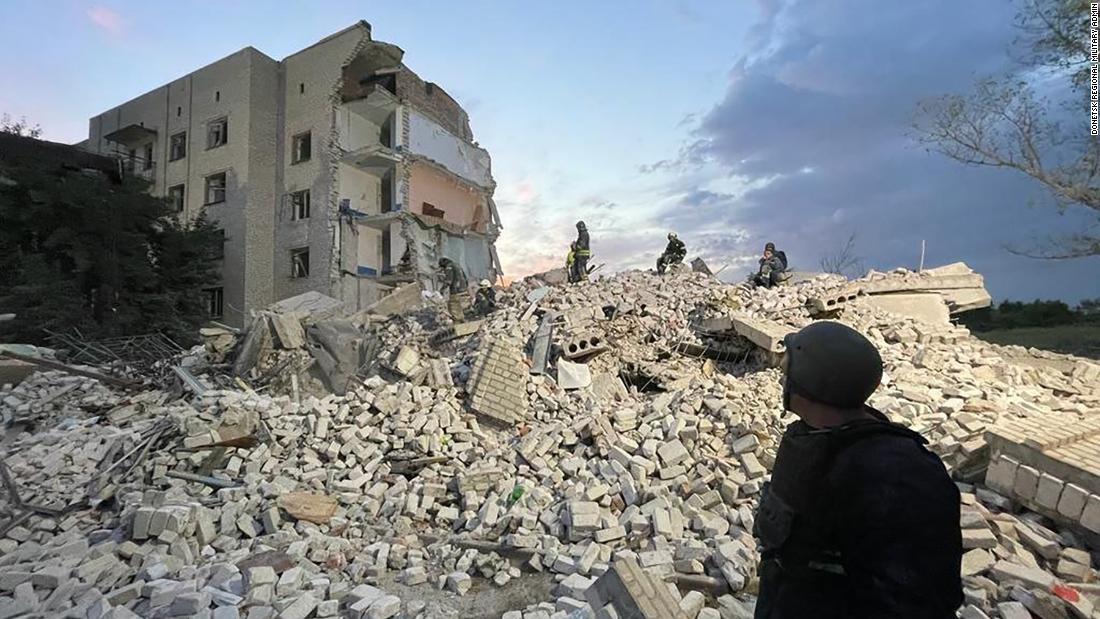

The United States on Monday unveiled a potential new player in the Ukraine war: Iran.
Newly declassified US intelligence indicates that Tehran is preparing to supply Russia with “hundreds” of drones — including those with weapons capability — for use in the war in Ukraine, White House officials said.
“Our information further indicates that Iran is preparing to train Russian forces to use these UAVs, with initial training session slated in as soon as early July. It’s unclear whether Iran has delivered any of these UAVs to Russia already,” national security adviser Jake Sullivan told reporters at the White House press briefing on Monday.
Sullivan argued that news of Iran supplying the drones is evidence that Russia’s attacks against Ukraine in recent weeks are coming at the “severe” cost of depleting of its own weapons.
The announcement has raised eyebrows, and not everyone is convinced that Iran is capable of exporting large quantities of drones. “It’s unlikely Iran even has that many operational drones in its own fleet,” tweeted Esfandyar Batmanghelidj, founder of Bourse Bazaar, a London-based think tank. “It also has no experience exporting drones at scale.”
The White House’s claim comes as nuclear talks between Iran and the United States have come to a dead-end, potentially raising the specter of renewed conflict in the Middle East should they fail. But it also comes as Middle East states prepare to launch an alliance of Arab states and Israel, reportedly under US backing, to counter potential threats from Iran. Iran has warned that it views the move as provocative and a threat to its national security.
If Iran is indeed planning to sell arms to Russia for use in its war on Ukraine, it would be essentially inserting itself into a Russian-Western proxy war in NATO’s backyard. The message to the Biden administration is that Tehran too can spread its influence to faraway conflict zones where the US has vested interests.
While Iran’s drones haven’t been known to be sought after by militaries around the world, they do pose a potent threat to its adversaries. They have been an integral part of Iran’s military strategy and have caught the attention of American officials. Last year, Gen. Kenneth F. McKenzie Jr., the top US commander in the Middle East, told Congress that Iran-linked drones “present a new and complex threat to our forces and those of our partners and allies.” For the first time since the Korean War, “we are operating without complete air superiority,” he said.
Drone warfare was especially important in the early weeks of the Ukrainian conflict, when Turkish-made strike drones were used by the Ukrainian military to great effect. But Russian air defenses now provide greater coverage in the east.
Iranian drones would not be a game changer but might mitigate Russian weaknesses in exploiting UAVs.
Major General Hossein Salaami, the commander of Iran’s elite Islamic Revolution Guards Corps, said last year that his country possesses drones with a 7,000 kilometer (4,300 mile) range. According to the United States Institute of Peace, Iran’s medium-to-large drones can likely stay in the air for up to 20 hours while carrying fairly sophisticated sensors, payloads and a range of weapons. Some its drones, like those used by Lebanon’s Hezbollah, can carry a payload of up to 150kg, it said.
Iranian drones have been used outside its borders before, but that has largely been in Middle East conflict zones where Tehran can smuggle them to its non-state proxies. They have been effective in Iraq, Yemen and Saudi Arabia, where they were believed by the US to have been used in an attack on Saudi oil facilities in 2019 that saw crude prices soar to a record high. Iran denied launching that attack.
The arrival of Iranian weapons into Europe’s biggest conflict since the Second World War would be a major milestone for Iran’s weapons industry and its status as an arms manufacturer. And it would represent a rare occasion when Tehran’s weapons were being employed not just by a state actor, but one that is a top global military power.
CNN’s Tim Lister contributed to this article.